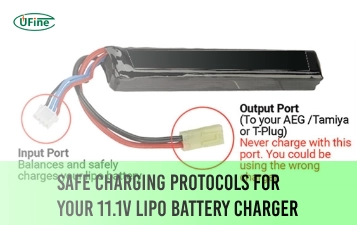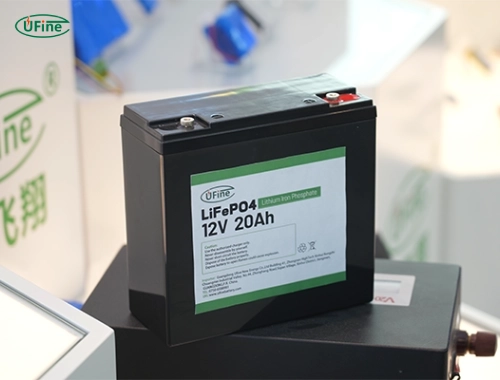Choosing the right depth finder battery is essential for a successful fishing trip. A good battery ensures that your depth finder operates smoothly, providing accurate readings and enhancing your fishing experience. In this article, we will explore selecting the best battery for your needs, focusing on various types of batteries, their capacities, maintenance tips, and common mistakes to avoid.
Part 1. What is a depth finder battery?
A depth finder battery is a power source specifically designed to operate fish finders and other electronic devices used in fishing. These batteries come in various types, including lead-acid, lithium-ion, and AGM (Absorbed Glass Mat), offering distinct advantages and disadvantages. The right battery will depend on your specific needs, including the type of fishing you do, the duration of your trips, and the power requirements of your equipment.
Part 2. Why is choosing the right depth finder battery essential?
Selecting the appropriate battery for your depth finder is crucial for several reasons:
- Performance: The right battery ensures that your depth finder works efficiently without interruptions. This means you can rely on it to provide accurate readings while you fish.
- Duration: A battery with the correct capacity allows you to fish longer without worrying about losing power. This is especially important during long trips or when fishing in remote locations.
- Weight Considerations: Different batteries have different weights. A heavier battery can affect your boat’s performance and handling. A lightweight battery may be more suitable if you use a smaller boat.
- Cost-effectiveness: Investing in a quality battery can save you money over time by reducing the need for replacements and maintenance.
Part 3. What types of batteries are available for depth finders?
When it comes to depth finders, there are three primary types of batteries to consider:
Lead-Acid Batteries:
- Pros: Generally cheaper than other options and widely available. They are reliable for basic applications.
- Cons: Heavier than lithium batteries, less efficient, and shorter lifespan than lithium options.
Lithium-Ion Batteries:
- Pros: They are lightweight, have a longer lifespan (up to 10 years), have faster charging times, have higher energy density, and can provide consistent power over more extended periods.
- Cons: More expensive upfront but can be cost-effective over time due to their longevity and efficiency.
AGM Batteries:
- Pros: They are spill-proof and maintenance-free, making them safe for boat use. They offer good performance even in cold temperatures.
- Cons: Heavier than lithium batteries and typically have a shorter lifespan than lithium options.
Each battery type has unique features that cater to different fishing needs. It’s essential to weigh these factors based on your specific requirements.
Part 4. How do I determine the right capacity for my depth finder battery?
To choose the correct capacity for your depth finder battery, follow these steps:
Check Power Requirements: Check your depth finder’s specifications to determine its maximum power draw (in amps). This information is usually in the user manual or manufacturer’s website.
Calculate Usage Time: Estimate how many hours you plan to use the device during your fishing trip. Consider whether you’ll be using it continuously or intermittently throughout the day.
Use the Formula: To calculate the required amp-hour (Ah) capacity:
- Required Ah=Max Amps×Hours Used
For example, if your depth finder draws 2 amps and you plan to use it for 6 hours:
- Required Ah=2×6=12 Ah
Add a Safety Margin: It’s wise to add about 20% more capacity to ensure you don’t fully deplete the battery:
- Total Required Ah=Required Ah+(0.2×Required Ah)
This calculation helps ensure that you have enough power throughout your fishing trip without risking damage to your battery by discharging it too much.
Part 5. How do I maintain my depth finder battery?
Proper maintenance can significantly extend the life of your depth finder battery:
- Regular Charging: Always charge your battery after each use. This prevents deep discharges that can harm lead-acid batteries in particular.
- Storage Conditions: Store batteries in a cool, dry place away from direct sunlight or extreme temperatures. Extreme conditions can reduce battery life significantly.
- Periodic Checks: Inspect connections regularly for corrosion or damage. Clean them with a soft brush or cloth to ensure good electrical contact.
- Avoid Overcharging: Use smart chargers that stop charging automatically when the battery is full. Overcharging can reduce the lifespan and cause performance issues.
Following these maintenance tips ensures that your depth finder battery remains reliable throughout its life.
Part 6. What should I consider when using a lithium battery?
Using a lithium battery comes with specific considerations:
- Charging Compatibility: Ensure your charger is compatible with lithium batteries to avoid damage during charging cycles.
- Battery Management System (BMS): Look for batteries with built-in BMS features that protect against overcharging, overheating, and deep discharges. This technology enhances safety and extends battery life.
- Temperature Sensitivity: Lithium batteries perform best within specific temperature ranges. Be mindful of this if you’re fishing in extreme weather conditions.
Part 7. Can I use my power tool batteries for my depth finder?
You can use power tool batteries if they meet your depth finder’s voltage and amp-hour requirements. However, ensure they are designed for continuous discharge rather than just short bursts of power typical in tools.
Power tool batteries can be convenient if you’re already carrying them for other uses; however, they must be compatible with your device’s specifications.
Part 8. What are common mistakes when choosing a depth finder battery?
Avoid these common pitfalls when selecting a depth finder battery:
- Underestimating Power Needs: Many anglers need to pay more attention to their power requirements; always calculate based on maximum draw rather than average usage.
- Ignoring Weight Considerations: Heavier batteries can affect boat handling; consider weight if you use smaller vessels or plan on moving around frequently.
- Neglecting Maintenance Needs: Failing to maintain batteries can lead to premature failure; regular checks are essential for longevity.
By being aware of these mistakes, you can make better choices when selecting a depth finder battery that will serve you well during fishing trips.
Part 8. FAQs
-
What size battery do I need for my fish finder?
The size depends on the fish finder’s power draw and how long you plan to use it. Calculate based on the maximum amps required during operation and add extra capacity as a safety margin. -
Can I leave my fish finder plugged in all night?
It’s generally only recommended, as it may overcharge if you use a smart charger that stops charging automatically when it is complete. -
How long does a lithium battery last compared to a lead acid?
Lithium batteries typically last up to ten years, while lead-acid may only last three to five years with proper care and maintenance. -
Is it safe to use an SLA battery in cold weather?
Yes, but performance may decrease. Due to their design, AGM batteries tend to perform better in colder temperatures than standard lead-acid batteries. -
What happens if I drain my lithium battery completely?
Fully discharging a lithium battery can damage it; always keep it above a certain charge level (usually around 20%) to maintain its health and longevity.
Related Tags:
More Articles

Safe Charging Protocols for Your 11.1V LiPo Battery Charger
Safely charge your 11.1V LiPo battery by following proper rates, using safety tools, and avoiding common charging mistakes.
11.1 V LiPo Battery Airsoft: Boosting Field Performance
Upgrade your airsoft gun with an 11.1V LiPo battery for faster firing, longer runtime, and top-tier performance on the battlefield.
Batteries for Trolling Motors Lightweight vs. Leaf Blower Power
Explore the best lightweight trolling motor batteries and how they compare to leaf blower power for performance, portability, and runtime.
What Is a 2C Battery?
Learn what a 2C battery is, how C-rates affect performance, and how to calculate the number of batteries your device needs.
What Battery Does LED Strips Use?
Discover which batteries power LED strips best. Learn about voltage, capacity, battery types, and how to safely power your LED lighting projects.





